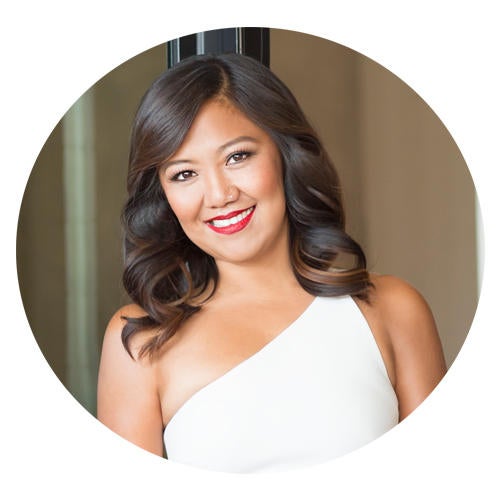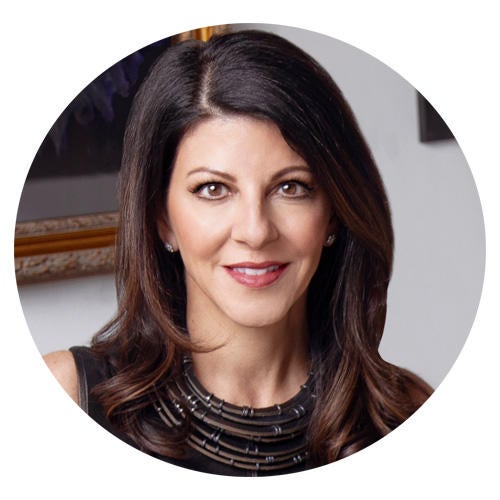While every designer has go-to pieces, most also have a few that are off-limits. We asked 10 designers—Keith Baltimore, Alizee Brion, Matthew Ferrarini, Christine Jahan, Valerie Legras, Chalice K. Lister, Christine Markatos Lowe, Donna Mondi, Jhoiey Ramirez and Diana Viera—what they refuse to use in their work.

No Copycats
“I’ve started refusing to use direct imitation products in my projects. When I was younger and thirsty for projects, I was less discerning about copies, due to my inexperience and ignorance. I didn’t know why certain items are priced as they are. After starting my own studio, gaining more experience and designing my own products, I now realize how much work is put into developing a product. I understand the value. Now, when a client shows me something they like but can’t afford, I dissuade them from getting a look-alike. Instead, I find them an [original] alternative that fits their budget and is more cohesive with the design.” —Jhoiey Ramirez, Studio Jhoiey, Los Angeles

Quality control
“I refuse to use low-quality products. You can’t always tell the quality of a product by price alone. Sometimes high-priced items are low in quality, or vice versa—you can find high-quality items that are undervalued and underpriced. That is one of the reasons why my clients trust me to help them make their purchasing decisions and to create high-quality custom pieces. They know I’ve got the expertise to ensure their money is only going toward items and materials that have the best value.” —Christine Jahan, Christine Jahan Designs, Glendora, California

Print out
“Every year I create my ‘hit list’ of elements that have become overdone. A few years back, I absolutely loved skulls—until they were everywhere. So I had to move on. I’m also really funny about patterns. I don’t love florals, plaids, stripes, geometrics, damasks or botanical prints, which doesn’t leave much else. But that’s why I get so excited when I see a pattern I love, and it’s even better if it comes in an unexpected color.” —Donna Mondi, Donna Mondi Interior Design, Chicago

Scale up
“[I refuse to use] disproportionate furnishings. I am a stickler for finding items that are scaled appropriately for the room size. I always talk my clients out of using previously purchased curtains that are too short, or tiny wall art. Another common thing I find is the use of dining chairs as accent chairs in another room. I will refuse to use dining chairs as anything else, because the scale is always too small and immediately sticks out to me.” —Chalice K. Lister, Kristell Interiors, Bear, Delaware

Convince me
“I have never been a fan of chenille fabric. Something about it reminds me of a cheap acrylic sweater. So, it would take a very convincing client to get me to select that fabric for upholstery.” —Christine Markatos Lowe, Christine Markatos Design, Santa Monica, California

Island time
“I typically steer clients away from kitchen peninsulas, unless there is absolutely no alternative. When designing, flow is a top priority, which is why I prefer islands over peninsulas. Kitchens with peninsulas typically have one point of entry into the space, which creates traffic congestion and an overall decrease in flow. Islands allow two points of flow and foot traffic, which makes a huge difference for homeowners.” —Matthew Ferrarini, Ferrarini & Co. Kitchens and Interiors, Philadelphia

Think green
“Anything that is not sustainable is a concern to me. We are at the beginning of a new era, and the COVID-19 crisis forces us to look even deeper at our responsibilities: how we live and what planet we are going to hand to our children. [In addition to unsustainable products], I despise popcorn ceilings and orange peel finish on walls!” —Valerie Legras, Valerie Legras Atelier, New Orleans

White out
“I love neutral and monochrome interiors, but one thing you’ll never see in our projects is a large white leather sofa. Aside from the cheesy modern stereotype that it embodies, I’ve always found leather to be an uncomfortable material for lounge seating. If you want to do a light or even an all-white palette for your interiors, it’s important to build layers of contrasting textures using natural materials as much as possible to create tension and add depth.” —Alizee Brion, Light on White Design Studio, Miami

Wear and tear
“I try to steer clients away from things that won’t wear well or will get destroyed, because I’ll ultimately just get called back to redo it. For instance, I wouldn’t put sisal on a staircase, because in two years it’s going to be worn out and the client is going to hate it. I also think if a client came to me and really wanted to do a tiki bar, I might have to put my foot down.” —Keith Baltimore, Baltimore Design Group, Port Washington, New York

No cutting corners
“One thing I always tell my clients is that we don’t have to sacrifice the quality of material in order to save money. I refuse to incorporate certain elements into our work because of cost constraints. Our expertise is the use of high-quality, luxury materials, and using something like melamine in lieu of wood veneer is just not the same. But what I can offer my clients in terms of cost efficiency is a better, stronger and smarter design. A smart design not only looks good and showcases great finishes, but saves clients money and maintains the luxury aesthetic we set out for.” —Diana Viera, Italkraft, Miami
Homepage photo: A project by Christine Markatos Lowe | Courtesy of the designer




























